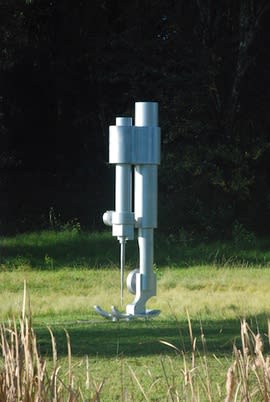Monuments to white power and dominion have been a focal point of the culture wars gripping South Africa, prompting heated discussions about their survival. Yet Helen Pheby, the senior curator at the Yorkshire Sculpture Park, doesn’t directly engage this ongoing volatility in A Place in Time, her guest showcase of fifty-two mostly new outdoor works by thirty-seven artists from Germany, India, Nigeria, South Africa, Switzerland, and the UK at this sculpture park northwest of Johannesburg. Inspired by the area’s fossil-rich landscapes, her survey of contemporary sculpture instead places these works in a continuum of human time by juxtaposing them against a museological display of archaeological fragments in a small gallery.
Richard Long’s Standing Stone Circle, 2011, composed of loose rocks found in the untended parts of the park, is a permanent installation. A literal outlier, it nonetheless animates Pheby’s central theme. Similar to Long’s remote piece, James Webb’s audio work There’s No Place Called Home, 2004–16, which plays foreign birdcalls from a tree in the landscaped garden, is subsumed by its organic context—a minority position, as most of the outdoor works are plainly legible as such.
Mary Sibande explores her long-standing interest in fashion in The Mechanism, 2016, a study of a mechanical sewing needle rendered at the scale of Claes Oldenburg and Coosje van Bruggen’s public works. Nearby, Nandipha Mntambo synthesizes mythologies in the outsize bronze figure Minotaurus, 2015. There is a corollary between this resolute figure and Thomas J. Price’s Mental Structure #19, 2014–15, a facsimile of a black male figure composed from Perspex and bronze that prefigures an encounter with Johan Thom’s Hanging Garden, 2016: two bronze feet set atop a glass vitrine on a wooden terrace covered in an off-white polyurethane sludge, its drained, white figure speaking to the changeable politics raging outside the park.

